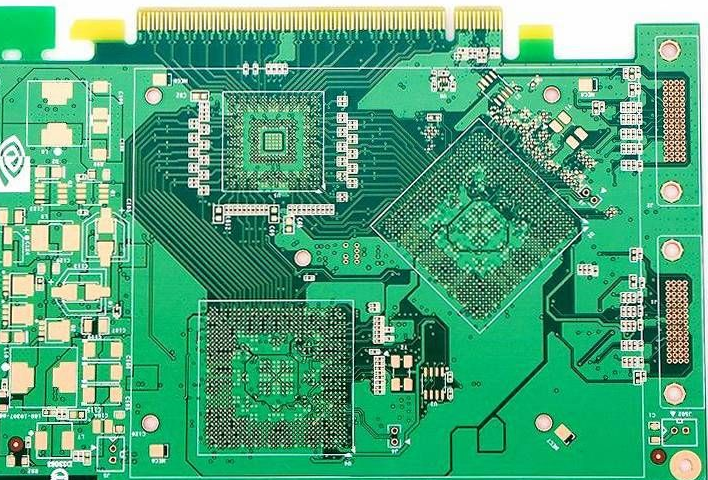(1) Power supplies of different voltage levels should be isolated, and power supply wires should not cross.
(2) The wiring adopts 45° corners or circular arc corners, and no sharp corners are allowed.

(3) The PCB trace is directly connected to the center of the pad, and the width of the wire connected to the pad is not allowed to exceed the outer diameter of the pad.
(4) The line width of the high-frequency signal line is not less than 20mil, and the external ground wire is used to surround it, which is isolated from other ground wires.
(5) Do not wire the bottom of the interference source (DC/DC converter, crystal oscillator, transformer, etc.) to avoid interference.
(6) Thicken the power line and ground line as much as possible, and the width of the power line should not be less than 50mil if space permits.
(7) The signal line width of low voltage and low current is 9~30mil, and it should be as thick as possible if space permits.
(8) The spacing between signal lines should be greater than 10 mils, and the spacing between power lines should be greater than 20 mils.
(9) The line width of high-current signal lines should be greater than 40 mils, and the spacing should be greater than 30 mils.
(10) The minimum size of the via hole is preferably 40 mil outside diameter and 28 mil inside diameter. When connecting with wires between the top layer and the bottom layer, pads are preferred.
(11) It is not allowed to arrange signal lines on the inner electric layer.
(12) The width of the interval between different areas of the inner electrical layer shall not be less than 40 mils.
(13) When drawing the boundary, try not to let the boundary line pass through the pads of the area to be connected to.
(14) Laying copper on the top and bottom layers, it is recommended to set the line width value larger than the grid width to completely cover the empty space and leave no dead copper. At the same time, keep a distance of more than 30mil (0.762mm) from other lines (copper can be used in the Set the safety distance before, and change it back to the original safety distance after the copper coating is completed).
(15) Teardrop the pad after wiring.
(16) The metal shell device and the external grounding of the module.
(17) Place the pads for mounting and soldering.
(18) The DRC check is correct.
4. PCB layering requirements
(1) The power plane should be close to the ground plane, tightly coupled with the ground plane, and arranged below the ground plane.
(2) The signal layer should be adjacent to the inner electrical layer, not directly adjacent to other signal layers.
(3) Isolate digital circuits and analog circuits. If conditions permit, arrange the analog signal lines and digital signal lines in layers and adopt shielding measures; if they need to be arranged on the same signal layer, they need to use isolation bands and ground lines to reduce interference; power supplies for analog circuits and digital circuits And the ground should be isolated from each other and cannot be mixed.
(4) The high-frequency circuit has a large external interference, and it is best to arrange it separately, and use the intermediate signal layer directly adjacent to the inner electric layer above and below for transmission, so as to use the copper film of the inner electric layer to reduce external interference.